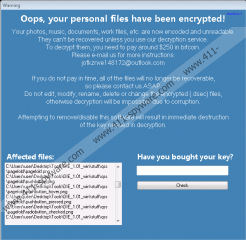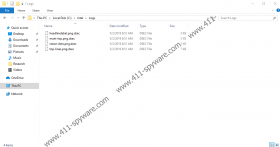Dualshot Ransomware Removal Guide
Do you have $250 to blow in the wind? If you do, the attackers behind Dualshot Ransomware might convince you to pay a ransom. First, they encrypt your files, and then they promise to decrypt them for a small fee. Of course, to some people, 250 dollars is a paycheck. To others, it is just another night on the town. The bottom line is that whether or not you have money to spare, you must not give in to cybercriminals. While they can promise you great things, in reality, they are unlikely to give you anything. Least of all, a working decryptor. Unfortunately, these cybercriminals can trick some victims into disclosing their email addresses as well. If you do that too, the attackers could try to scam you in the future. To fool you, they could also use different techniques and scams. Hopefully, you have not been tricked in any way by this point. Regardless, deleting Dualshot Ransomware is very important, and we are here to assist you with that.
Our researchers are still tracking Dualshot Ransomware to see how it behaves, and we are still gathering information about how it spreads. That being said, it is most likely to follow the same paths as Vivelag Ransomware, HCK Ransomware, BBC Ransomware, Avaddon Ransomware, and all other file-encrypting infections that you can find analyzed on our website. Without a doubt, Dualshot Ransomware cannot invade protected systems. Instead, it goes after systems with vulnerabilities and security backdoors. Some Windows users ignore update alerts, and they choose to run outdated software. Well, updates contain patches for vulnerabilities, without which the security of the entire operating system might fail. Common security backdoors exploited by ransomware include bundled downloaders and spam emails. Of course, do not just assume that you can evade malware if you reject unfamiliar downloaders and remove spam emails without opening them. Cybercriminals are constantly finding new ways to attack unprotected systems. If you believe that you can defend your own operating system and delete malicious threats, think again.
If Dualshot Ransomware executes successfully, all personal files are encrypted by it. To mark them, the threat adds the “.dsec” extension at the end. You do not need to remove it. Before you can even realize what has happened, the infection should restart your computer. After it boots up again, a window named “Warning” should show up. The attackers are using this window to deliver a message, which is meant to convince you to send a message to jofkznve148172@outlook.com and then pay a ransom of $250 to get the files decrypted. The message provides no guarantees that the decryptor would be given in return for the money, but even if such a guarantee was given, we would identify it as a lie. You also should pay no attention to threats that a decryption key would be destroyed if you tried to remove Dualshot Ransomware or that your files would become irrecoverable if you tried to edit them in any way. In reality, it is unlikely that your files are recoverable at all. However, if you have backups, they might be replaceable. If you have not yet set up backups, we suggest storing copies in external or virtual drives to ensure that they are separated from original copies. Also, if you want to replace files, delete the ransomware first.
If the ransom note window launched by Dualshot Ransomware is still on your screen, perhaps you can find the main .exe file using the running process. The guide below shows how to terminate this process and find the malicious file that, of course, must be removed. If the process is no longer running, note that the file is likely to exist in the %LOCALAPPDATA% directory. Of course, even if you can handle the manual removal of Dualshot Ransomware all on your own, we strongly recommend that you implement legitimate anti-malware software to assist you. It can delete the existing threats automatically, but it is more important that it can protect the operating system against cybercriminals’ attacks in the future. This is something that Windows users are usually incapable of handling themselves, and so anti-malware software is necessary.
How to delete Dualshot Ransomware
- Launch Task Manager (tap Ctrl+Alt+Delete and select).
- In the Details tab, find the malicious process, which might be named DSNWIN1829.exe.
- Right-click the process and click Open file location to access a malicious .exe file, which might be named DSNWIN1829.exe.
- Go back to the Task Manager, select the process, and click End process.
- Go to the malicious .exe file, then right-click it, and choose Delete.
- Once you Empty Recycle Bin, immediately install and run a legitimate malware scanner.
Dualshot Ransomware Screenshots:



